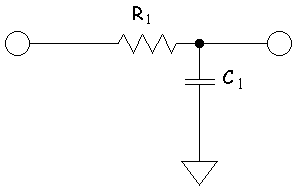I have just finished the cabinets for my budget 2way speaker using a TB 871 and Dayton RS225 per side. My bass alignment is meant to be overdamped, tuned to about 23-25hz in a 70-75L box. To this end purchased one of these flared ports:
The price and aesthetics were right, and the generous flare should help with vent velocity right? Well maybe I jumped the gun a bit. These are labelled as 3"ID, which they are in the center. Modelling them in BAssBoxpro as a 11.5" dual flared 3" port gave me a tuning in the low 20s. However after measuring the woofer in-box with the port installed, I am getting peak port output somewhere in the 30-35hz range (33 I think). Seems like this port should be modelled as closer to a 4" ID. This is not ideal, as these speakers are meant to be used for low-level (apartment) home theater use, and after testing them in this application, I can see that there is a lot of information below the tuning frequency, and on some scenes the cones are flopping around like crazy. To their credit the RS225s seem to be near-bulletproof, but I am concerned that this will be an issue for the eventual owners of these speakers.
Does anyone have any practical ideas for how to lower the tuning frequency, bearing in mind that I've already made the huge 5 3/4" cutout for this port, and the heavy flare at the back end? My enclosures are about 16" deep internally, so I have 3-4 more inches at most behind the port to work with. So far the best I have thought of is to extend the port by gluing bristol board or somesuch to it.
The price and aesthetics were right, and the generous flare should help with vent velocity right? Well maybe I jumped the gun a bit. These are labelled as 3"ID, which they are in the center. Modelling them in BAssBoxpro as a 11.5" dual flared 3" port gave me a tuning in the low 20s. However after measuring the woofer in-box with the port installed, I am getting peak port output somewhere in the 30-35hz range (33 I think). Seems like this port should be modelled as closer to a 4" ID. This is not ideal, as these speakers are meant to be used for low-level (apartment) home theater use, and after testing them in this application, I can see that there is a lot of information below the tuning frequency, and on some scenes the cones are flopping around like crazy. To their credit the RS225s seem to be near-bulletproof, but I am concerned that this will be an issue for the eventual owners of these speakers.
Does anyone have any practical ideas for how to lower the tuning frequency, bearing in mind that I've already made the huge 5 3/4" cutout for this port, and the heavy flare at the back end? My enclosures are about 16" deep internally, so I have 3-4 more inches at most behind the port to work with. So far the best I have thought of is to extend the port by gluing bristol board or somesuch to it.


Comment